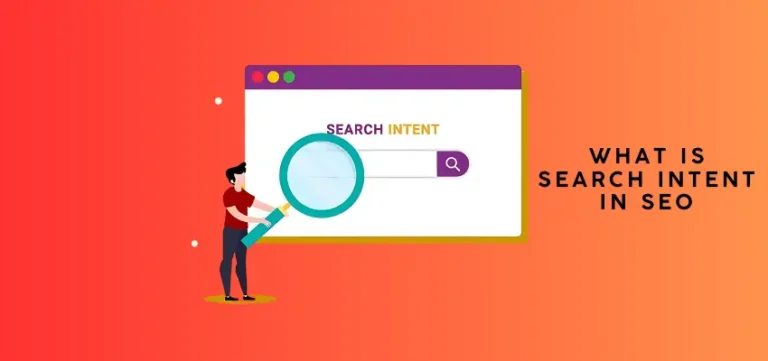Search intent is one of the most important ranking factors in SEO today. Google has continuously refined its algorithms to ensure that search results align with what users actually want rather than just keyword matches. If your content doesn’t match the intent behind a search query, it won’t rank—no matter how well it’s optimized.
In this comprehensive guide, we’ll break down:
What search intent is and why it matters
The four main types of search intent
How to identify search intent for keywords
Strategies to optimize content for each intent
Real-world examples of search intent in action

What is Search Intent in SEO?
Search intent (also called user intent) refers to the purpose behind a user’s search query. Google’s ultimate goal is to provide results that match not just the words in a query, but also the reason why the searcher is looking for it.
For example:
“Best SEO tools 2025” → The user wants a list of tools to compare (commercial intent)
“Buy Ahrefs subscription” → The user is ready to make a purchase (transactional intent)
“What is keyword research?” → The user wants information (informational intent)
By aligning content with search intent, businesses can rank higher, attract more relevant traffic, and improve conversion rates.
Why Search Intent Matters for SEO in 2025
Google’s RankBrain, BERT, and AI-driven algorithms focus on understanding intent rather than just keywords. If a page does not match user intent, it will struggle to rank, even if it has strong backlinks and on-page SEO.
Benefits of Optimizing for Search Intent:
Higher rankings and better CTR as Google prioritizes intent-matching content.
Lower bounce rates since visitors stay longer when content satisfies their needs.
Increased conversions by matching the right intent to drive sign-ups, leads, and sales.
More chances for featured snippets when providing well-structured answers to informational queries.
The Four Main Types of Search Intent
To optimize your content effectively, you need to understand the four primary types of search intent:
1. Informational Intent (Users Want Answers)
Users searching for information, guides, or definitions. Google often ranks blog posts, Wikipedia, knowledge panels, and featured snippets.
Examples:
“What is SEO?”
“How does Google rank websites?”
“Search intent meaning”
Optimization Strategies:
Write detailed, in-depth blog posts (Example: SEO Basics).
Use FAQ sections and schema markup for featured snippets.
Add images, videos, and infographics to make content engaging.
Include internal links to related content (Example: Zero-Click Searches).
2. Navigational Intent (Users Want a Specific Website)
Users already know what they’re looking for and want to navigate to a specific page. Google ranks homepages, product pages, and brand-specific content.
Examples:
“Google Analytics login”
“Ahrefs blog SEO”
“CG Marketing SEO services”
Optimization Strategies:
Ensure your brand ranks first for its name.
Optimize meta titles and descriptions with brand keywords.
Use Google My Business to dominate local searches (Example: Google My Business Optimization).
Create a clear site structure for easy navigation.
3. Transactional Intent (Users Want to Take Action)
Users are ready to buy, sign up, or request a service. Google prioritizes e-commerce pages, service pages, and paid ads.
Examples:
“Buy SEO tools online”
“Hire an SEO consultant in Dubai”
“Get a free SEO audit”
Optimization Strategies:
Create high-converting landing pages with strong CTAs.
Use action-oriented headlines like “Book a Free Consultation Today.”
Optimize for commercial keywords (Example: Affordable SEO Services).
Include trust signals like testimonials and case studies.
4. Commercial Investigation Intent (Users Are Comparing Options)
Users are in the research phase before making a purchase. Google ranks comparison articles, product reviews, and top-list articles.
Examples:
“Best SEO agencies in Dubai”
“Ahrefs vs. Semrush comparison”
“SEO pricing in UAE”
Optimization Strategies:
Write detailed comparison posts with pros and cons.
Publish case studies and testimonials.
Use listicle content (Example: Best SEO Tools).
Optimize meta descriptions to increase CTR.
How to Identify Search Intent for Keywords
To determine the search intent behind a keyword, use:
Google SERP analysis – Look at what’s currently ranking.
Ahrefs or Semrush keyword intent data.
Common keyword modifiers:
“How to” / “Guide” → Informational.
“Best” / “Top 10” → Commercial Investigation.
“Buy” / “Hire” → Transactional.
Real-World Examples of Search Intent in Action
Analyzing search intent in real scenarios helps understand how to optimize content.
Example 1: “Best WordPress SEO plugins”
Search Intent: Commercial Investigation
Ideal Content: Listicle blog comparing top plugins
Google’s Preferred Format: Top 10 articles and comparison guides
Reference: Best WordPress SEO Plugins – Semrush
Example 2: “Google Search Console login”
Search Intent: Navigational
Ideal Content: Official Google login page
Google’s Preferred Format: Direct website links and knowledge panel
Reference: Google Search Console Login
Example 3: “How to improve Core Web Vitals”
Search Intent: Informational
Ideal Content: In-depth tutorial or video guide
Google’s Preferred Format: Step-by-step blogs, featured snippets
Reference: How to Improve Core Web Vitals – Google Developers
FAQ
1. How does search intent impact SEO rankings? Search intent helps Google determine which content is most relevant to a user’s query. Matching intent increases rankings, user engagement, and conversions.
2. Can one keyword have multiple search intents? Yes. Some keywords have mixed intent, meaning users may be looking for different types of results. Google adjusts SERPs accordingly.
3. How do I optimize for search intent? Analyze search results, align content type with user needs, and use structured data to improve visibility in SERPs.
4. How can I check a keyword’s search intent? Use Google search results, SEO tools like Ahrefs or Semrush, and analyze common keyword modifiers to determine intent.
Conclusion
Understanding and optimizing for search intent is the key to SEO success in 2025. Google prioritizes relevance, user experience, and satisfaction over outdated keyword-stuffing tactics.
Want to rank higher on Google? Get a free SEO audit today!
